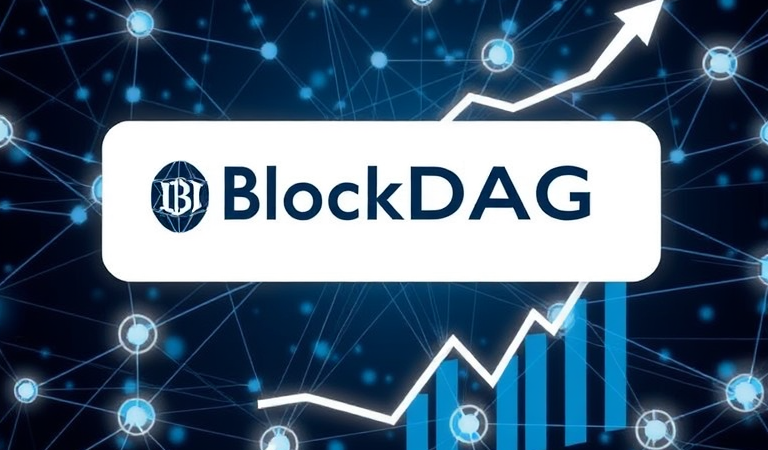The Future of Digital Currency Technology
As of late, computerized cash innovation has quickly advanced, reshaping the monetary scene and how we see cash. From Bitcoin’s origin in 2009 to the ascent of National Bank Advanced Monetary standards (CBDCs) and blockchain developments, the eventual fate of computerized money vows to carry extraordinary changes to economies, social orders, and individual lives. This article investigates the expected headways in advanced money innovation, its suggestions, and the difficulties that lie ahead.

The Advancement of Computerized Cash
Advanced monetary standards have moved from specialty applications to standard conversations. At first, digital forms of money like Bitcoin and Ethereum got forward momentum as decentralized options in contrast to customary monetary standards, driven by their commitment of safety and namelessness. Over the long run, these cryptographic forms of money have developed, earning respect from financial backers, organizations, and even state run administrations.
At the same time, the idea of CBDCs has arisen, with national banks overall investigating the chance of giving computerized adaptations of their public monetary standards. Not at all like cryptographic forms of money, CBDCs are directed and supported by state run administrations, intending to join the advantages of computerized monetary standards with the steadiness of conventional government issued currency.
The Ascent of National Bank Advanced Monetary forms (CBDCs)
CBDCs address a huge change in the computerized cash scene. Nations like China, Sweden, and the Bahamas are as of now steering their computerized monetary forms, while others, including the US and the European Association, are in different phases of innovative work. The inspirations for sending off CBDCs are diverse:
1 Monetary Consideration: CBDCs can give unbanked populaces simpler admittance to monetary administrations, overcoming any issues in underserved networks.
2 Exchange Productivity: Computerized monetary standards can work with quicker and less expensive cross-line exchanges, diminishing dependence on delegates and diminishing expenses.
3 Combatting Illegal Exercises: CBDCs can upgrade exchange detectability, making it harder for unlawful exercises like illegal tax avoidance and tax avoidance to thrive.
4 Financial Approach Execution: National banks can use CBDCs to all the more actually carry out money related arrangements, straightforwardly impacting shopper conduct through programmable cash.
As legislatures investigate these advantages, the eventual fate of CBDCs looks encouraging, with possible boundless reception not too far off.
5 Blockchain Innovation: The Foundation of Advanced Cash
At the center of numerous computerized monetary forms lies blockchain innovation, a decentralized record framework that records exchanges across different PCs. This innovation guarantees straightforwardness, security, and unchanging nature, settling on it a convincing decision for different applications past digital currencies.
The future of blockchain innovation in advanced money could see upgrades that make it more proficient and adaptable. Arrangements like Layer 2 conventions (e.g., Lightning Organization for Bitcoin) expect to address adaptability issues by empowering quicker and less expensive exchanges. As blockchain innovation develops, interoperability between various blockchain organizations could turn into a reality, permitting consistent exchanges across different computerized monetary standards.
In addition, shrewd agreements — self-executing contracts with the terms straightforwardly composed into code — can possibly reform how we handle exchanges. This innovation can computerize complex arrangements and smooth out processes, diminishing the requirement for middle people and improving trust.
The Effect of Advanced Cash on Conventional Banking
As computerized cash innovation keeps on advancing, customary financial organizations should adjust to remain significant. The ascent of advanced monetary standards has proactively provoked banks to investigate organizations with fintech firms, put resources into blockchain innovations, and even foster their own computerized monetary forms.
Banks might have to reexamine their parts in the monetary environment. With CBDCs and digital currencies offering options in contrast to customary banking, foundations might change from being middle people to offering some benefit added administrations like security, warning, and hazard the executives. Furthermore, the potential for shared exchanges could reduce the requirement for customary financial administrations, constraining banks to persistently improve.
Administrative Difficulties and Contemplations
Regardless of the promising fate of computerized money innovation, critical administrative difficulties remain. Legislatures and monetary specialists are wrestling with how to direct digital forms of money and CBDCs without smothering advancement. Finding some kind of harmony between shopper assurance, monetary steadiness, and it is essential to cultivate innovative progression.
One of the essential worries is the potential for computerized monetary standards to work with criminal operations, for example, illegal tax avoidance and psychological oppressor funding. Controllers are investigating measures to guarantee that advanced monetary forms are dependent upon similar consistence guidelines as customary monetary frameworks. This could include Know Your Client (KYC) guidelines and exchange observing to upgrade security.
Besides, the natural effect of digital money mining, especially for evidence of-work frameworks like Bitcoin, has raised concerns. As computerized monetary standards get some momentum, the requirement for additional manageable practices in their creation and upkeep will turn out to be progressively basic.
Future Patterns in Advanced Cash Innovation
As we look forward, a few patterns are probably going to shape the fate of computerized money innovation:
1 Expanded Reception of CBDCs: More nations will send off CBDCs, possibly prompting a worldwide norm for computerized monetary standards.
2 Combination of Computerized reasoning: man-made intelligence can improve exchange checking, extortion identification, and client care in advanced cash frameworks.
3 Center around Interoperability: As different computerized monetary standards arise, the requirement for interoperability between various frameworks will drive innovative progressions.
4 Ascent of Decentralized Money (DeFi): DeFi stages that permit clients to loan, get, and exchange without mediators will keep on developing, testing customary monetary frameworks.
5 Improved Safety efforts: As advanced monetary standards gain prominence, the interest for powerful security conventions will increment to safeguard clients from hacks and tricks.
End
The eventual fate of computerized money innovation holds massive potential, promising to reshape the monetary scene and upgrade the manner in which we go through with exchanges. With the ascent of CBDCs, progressions in blockchain innovation, and the development of conventional banking, we stand near the very edge of another monetary period. Nonetheless, exploring administrative difficulties and guaranteeing the mindful reception of these advances will be fundamental. As we embrace this computerized change, the job of advanced money in our lives will keep on growing, offering new open doors for development and monetary consideration in an undeniably interconnected world.



